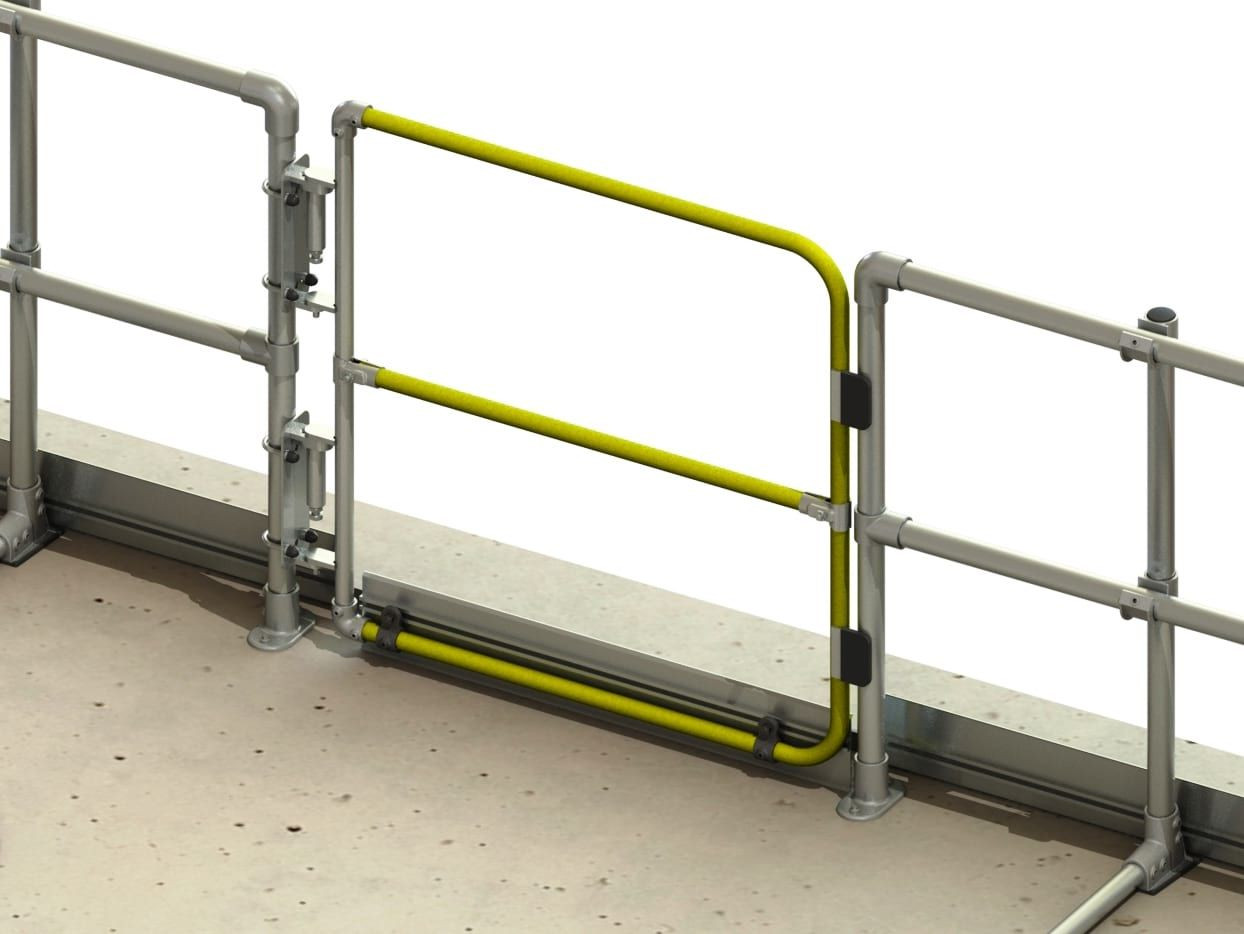Ladders are crucial tools across various industries, from construction sites to manufacturing plants. However, they pose significant fall risks if used improperly. Ladder safety gates play a vital role in preventing accidents by providing an added layer of security to ladder access points. This guide outlines the importance of ladder safety gates, how to choose the right one, maintenance tips, and the consequences of neglecting this crucial safety feature. By understanding and implementing ladder safety gate protocols, businesses and individuals can ensure a safer working environment for everyone involved.
Importance of Ladder Safety Gates
Preventing Accidents
Ladder safety gates act as physical barriers that reduce the risk of falls from elevated platforms. They are designed to be self-closing and swing inwards or outwards, ensuring that the access point is never accidentally left open. By installing ladder safety gates, you create a controlled entry and exit point, effectively minimizing the chances of slipping or falling from heights, which are among the leading causes of serious work-related injuries and fatalities.
Regulatory Compliance
Many industries are governed by strict regulations that mandate the use of ladder safety gates. Agencies such as the Occupational Safety and Health Administration (OSHA) in the United States enforce standards that require the installation of safety gates to protect workers from fall hazards. Compliance with these regulations not only ensures a safer workplace but also protects businesses from potential fines and legal consequences resulting from non-compliance.
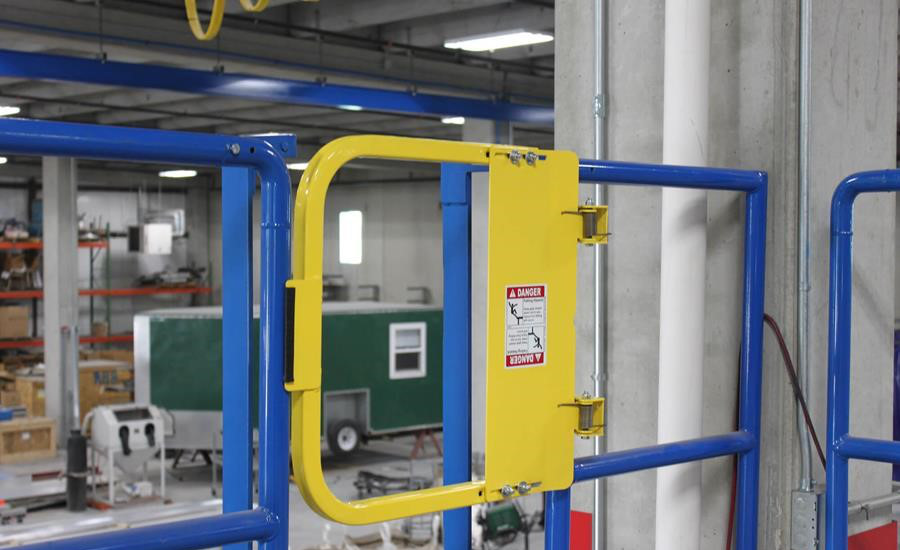
Choosing the Right Ladder Safety Gate
Assessing Your Needs
The first step in choosing the right ladder safety gate is assessing your specific needs. Consider the environment where the gate will be installed, the type of traffic (e.g., personnel or equipment), and the frequency of access required. Ladder safety gates are available in various materials, including steel, aluminum, and even some plastics, which offer different levels of durability and resistance to environmental factors like corrosion.
Size and Compatibility
It’s essential to select a ladder safety gate that fits the opening of your access point accurately. An ill-fitting gate can compromise safety and fail to provide a secure barrier. Measure the opening width and height carefully and check the gate’s adjustability features to ensure a snug fit. Additionally, consider the compatibility with your existing safety systems and whether the gate’s operation direction (inward or outward swinging) is suitable for your setup.
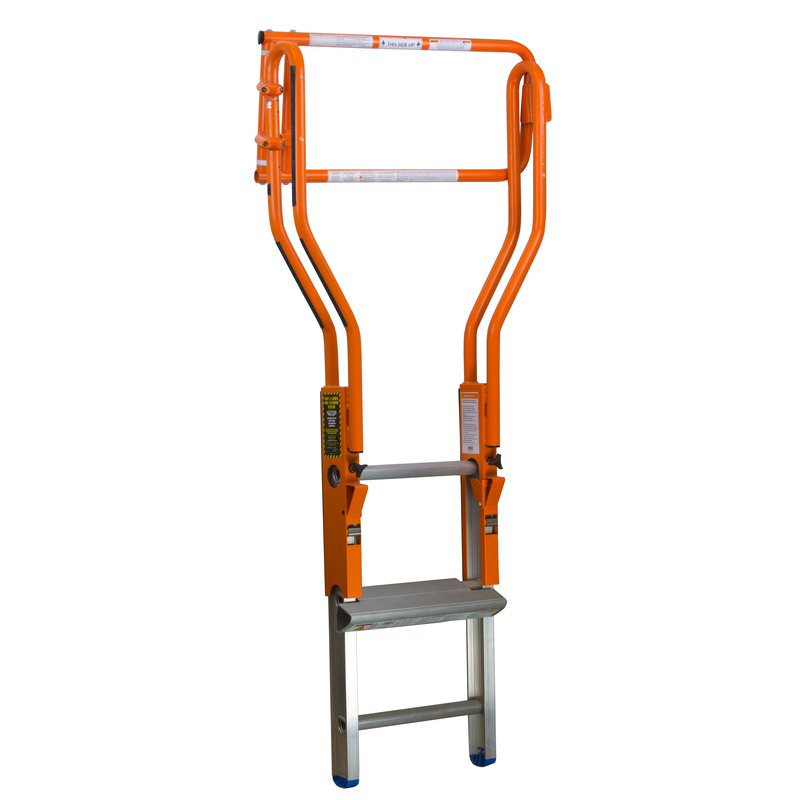
Maintenance and Inspection
Regular Checks
Like any safety equipment, ladder safety gates require regular maintenance to function correctly. Routine inspections should check for signs of wear, damage, or malfunction. Pay special attention to the self-closing mechanism and hinges, as these are critical for the gate’s effectiveness. Regularly tightening bolts and lubricating moving parts can prevent failures and extend the life of the gate.
Record Keeping
Maintaining a log of inspections, maintenance activities, and any repairs carried out on ladder safety gates is good practice. This documentation can be invaluable for troubleshooting recurring issues and demonstrating compliance with safety regulations during audits. It’s also helpful for planning preventative maintenance schedules to ensure safety features remain operational at all times.

Consequences of Neglecting Ladder Safety Gates
Increased Risk of Accidents
Neglecting ladder safety gates can significantly increase the risk of falls and serious injuries. Without a secure barrier, workers are more vulnerable to missteps that can lead to falls from heights, potentially resulting in severe consequences. Ensuring the integrity and functionality of ladder safety gates is crucial in mitigating these risks.
Legal and Financial Ramifications
Failure to maintain and properly use ladder safety gates can expose businesses to legal actions and hefty fines. Regulatory agencies hold employers responsible for providing a safe working environment. Neglect can lead to investigations, penalties, and increased insurance premiums, not to mention the potential costs associated with accidents, such as medical expenses, compensation claims, and loss of productivity.
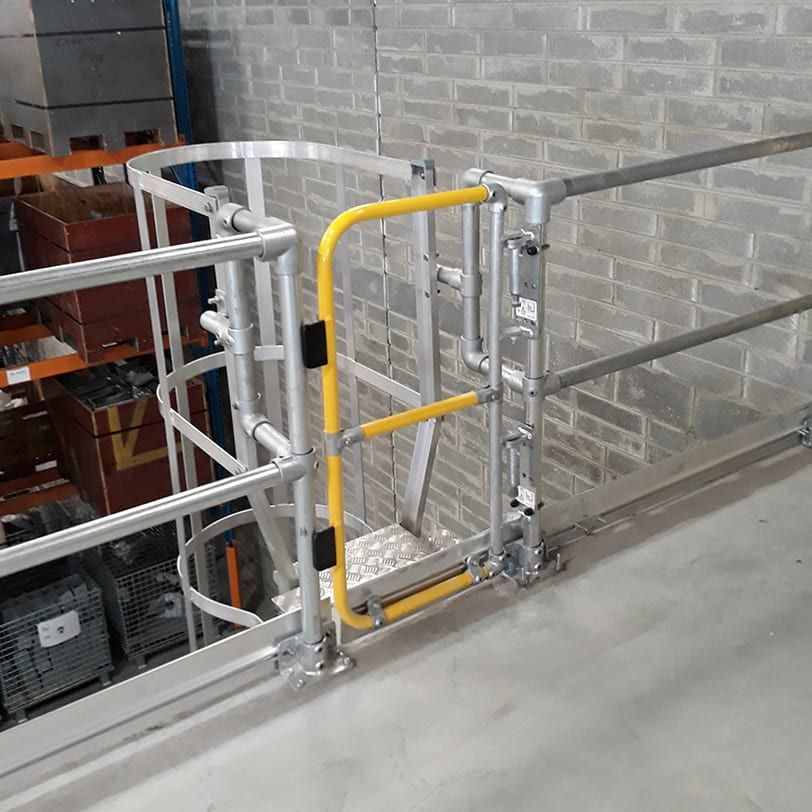
Training and Education: Empowering Safe Use
Instilling Best Practices
Beyond the physical installation of ladder safety gates, training and education are integral to fostering a culture of safety. Employees should receive thorough training on the correct use of ladder safety gates, including opening and closing procedures, and understanding when and why to use them. By instilling best practices through regular safety drills and training sessions, workers become more adept at recognizing potential hazards and taking proactive measures to prevent accidents.
Ongoing Learning
Safety protocols, especially around ladder usage, are continuously evolving. Therefore, it’s essential to keep up-to-date with the latest safety guidelines and innovations in ladder gate design. Encourage ongoing learning by subscribing to industrial safety publications, attending safety seminars, or conducting periodic in-house training refreshers. A workforce that is aware and educated on safety matters is an employer’s best asset in preventing workplace injuries.
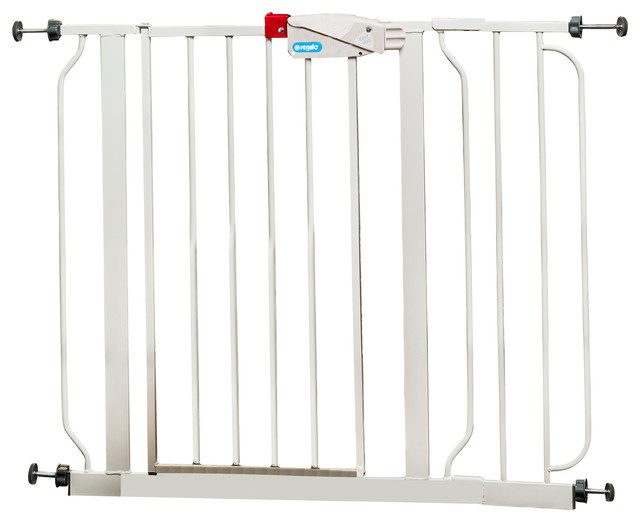
Advanced Safety Features
Integrating Enhanced Safety Systems
As safety technology advances, ladder safety gates have become more sophisticated. Features such as alarms that sound when a gate is left open, or electronic sensors that monitor and report on gate access, can be integrated into safety protocols. Employers should consider these advanced features when reviewing their safety gate systems to ensure they employ the most effective solutions available. Leveraging technology not only improves safety but also demonstrates an employer’s commitment to creating a secure workplace.
Creating a Responsiveness Plan
Developing an Emergency Response
Despite the best preventative measures, accidents can still occur. It’s vital to have an emergency response plan that includes instructions on how to react if a ladder-related accident occurs. The plan should detail first aid procedures, emergency contacts, and an evacuation protocol, if necessary. Regularly review and practice the response plan with all employees so that everyone knows their role in the event of an accident.
Post-Incident Action
After any safety-related incident, conduct a thorough investigation to determine the cause and any potential failures in safety equipment, such as a ladder safety gate. Use this incident as a learning opportunity to improve existing safety measures and prevent future accidents. Ensure that all findings and subsequent changes are communicated effectively to the entire workforce to maintain transparency and reinforce the significance of safety protocols.
In conclusion, ladder safety gates are an indispensable part of workplace safety, guarding against falls and ensuring compliance with regulatory standards. Choosing the right gate involves careful consideration of needs, environment, and compatibility. Regular maintenance and inspection routines are essential for keeping these barriers functional and effective. Awareness and adherence to these safety protocols can significantly reduce accident risks and protect businesses from legal and financial consequences. By prioritizing the implementation and upkeep of ladder safety gates, individuals and organizations can foster a safer working environment for all.
